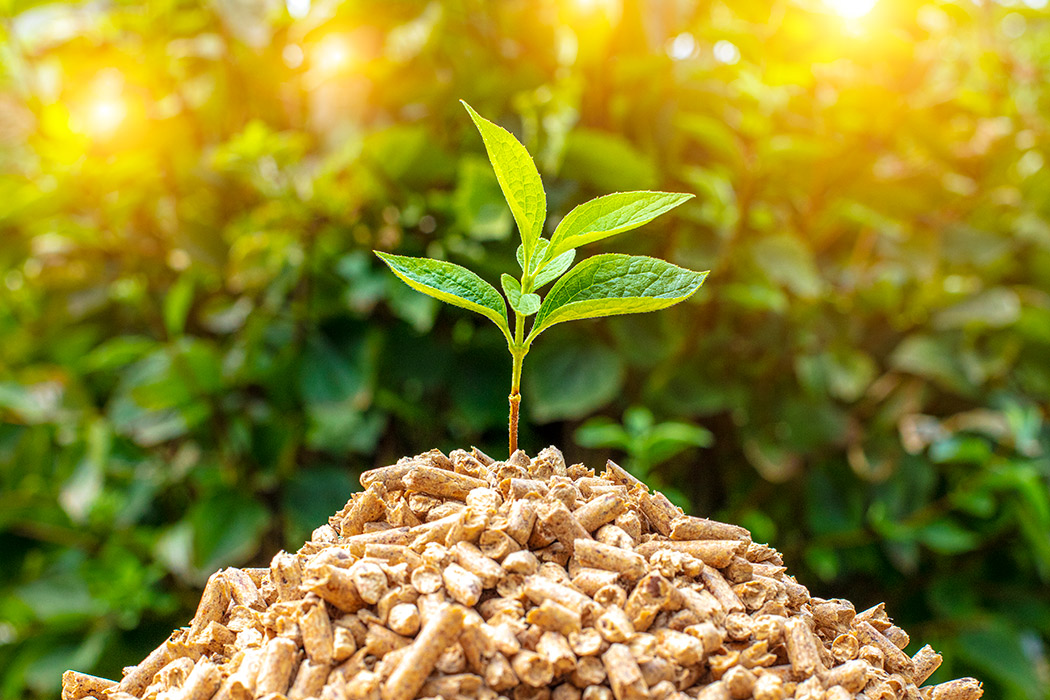
Toward a Circular Society with Clean Technology: Biomass Materials
- Biomass Materials
At the 2021 United Nations Climate Change Conference (COP26) in Glasgow, on November 2, 42 countries including Japan endorsed the Breakthrough Agenda. Its aim is to ensure that development and deployment of clean technology and sustainable solutions will be affordable, accessible, and attractive options for all. The Agenda calls for governments and businesses around the world to join forces in tackling climate change, clarifying the steps to fast-track creation and application of clean technology.
Biomass Materials: Vital to a Circular Society
― Use of bio-based materials minimizes our impact on the global environment
In Yokogawa's view, “clean technology” is not just a set of technologies for solving the issues of climate change and of the global environment. Rather, it is a market-driven combination of new technologies and associated business models that offer competitive returns for investors and customers while providing solutions to our planet's challenges. Accordingly, the company is emphasizing the value to society of diverse industry sectors including energy and power, transportation and logistics, and agriculture and food in order to create greater value for all.
As the impact of climate change is likely to exacerbate in the coming years, a shift to a new energy economics model is required, in which clean technology will play a significant role. Among the many fields of clean technology, one attracts particular attention for its potential to minimize our impact on the global environment: application of bio-based substances known as biomass materials.
Biomass is renewable organic material derived from plants and animals. Although biomass produces CO2 when burned, forest biomass is carbon-neutral because plants absorb CO2 from the atmosphere for photosynthesis. Accordingly, this type of biomass is regarded as an effective means to counter global warming. To achieve a decarbonized society built on a circular economy, we should see biomass not only as fuel but also having such broader applications as in the materials field. In fact, the use of biomass materials has been gaining traction in recent years in materials like PET bottles, packaging film, and textiles.
Over the years, we at Yokogawa have participated in diverse clean technology projects—including renewable energy facilities, water purification plants, and seawater desalination plants—to enable customers to meet their business challenges and to help solve environmental issues. Since 2018, the company has also been engaged in the biomass materials business, making investments in and forming partnerships with biotech companies. We established Yokogawa Bio Frontier Inc. in 2021, not only to support development and production of biomass with our customers but also to develop and produce these materials ourselves and thereby more effectively promote the widespread use of biomass materials.

A Key to Achieving Widespread Use of Biomass Materials
― Cellulose nanofiber and its tantalizing potential
One of the keys to widespread use of biomass materials lies in cellulose nanofiber (CNF), often referred to as a “dream material.” Cellulose, the most abundant biopolymer*1 on earth, is a principal component in the cell walls of green plants. CNF is a material composed of nanosized (1 nm = 0.000001 mm) cellulose fibrils extracted from wood-based fibers.
CNF is bio-based and biodegradable—and, most remarkably, five times stronger and lighter than steel. Inspired by these properties, researchers are working to create strong yet lightweight materials by using it as a reinforcing material and additive. Moreover, CNF retains its shape and size when heated, making it ideal for use in electronic substrates and packages. And when this biopolymer is processed in a certain way, light passes through it without scattering, which means that transparent materials are produced. These outstanding attributes make its potential applications quite wide-ranging and extremely promising.
Its use can benefit the environment, too. When used in auto components, for example, it reduces vehicle weight and improves fuel efficiency. CNF-based panels for houses and home appliances make excellent heat insulators that will reduce energy consumption and help curb global warming. Derived from forest resources, the use of CNF helps enable a recycling society. Stronger and lighter than steel and capable of contributing to a sustainable society, CNF is indeed a dream material with enormous potential.
However, there are several hurdles to overcome before this dream material can be brought to practical use. CNF is made by extracting nanosized fibrils from wood, a delicate process requiring the highest expertise. Producing it on an industrial scale involves considerable cost and energy. Moreover, as with any biomass-based material, manufacture of CNF is fraught with challenges and is less easy to maintain product uniformity than fossil-based materials. That makes production efficiency a major concern.
*1. A polymer is a substance consisting of very large molecules (or macromolecules). Biopolymers occur in nature, whereas synthetic polymers are artificially prepared.

Yokogawa's Technical Expertise Comes into Play
― Expanding the use of biomass materials through co-innovation
Although CNF comes in many forms, Yokogawa takes particular interest in sulphate esterified cellulose nanofiber, and has conducted independent research into this material. Employing proprietary chemical processes, the company developed S-CNF™, which can be dried into a powder and then reconstituted into a gel. In its powder form, S-CNF has approximately 1/100th the volume and weight of the gel—making storage and transportation simpler and easier without having to use tanks and tank trucks, significantly reducing the burden on the environment.
When powdered S-CNF is dissolved in water, it becomes thixotropic—meaning the solution is quite viscous when static but turns highly fluid when stirred or agitated. Think of ketchup in a bottle, for example. Because ketchup is thixotropic, it remains stuck in the bottle even when turned upside down—until the bottle is shaken. Some ballpoint pens use a CNF-based thixotropic agent to assure smooth ink flow without blurring the writing line. S-CNF can be used for similar applications and many others. In its dried film form, for example, S-CNF is smooth and transparent, and is an effective barrier against oxygen, making it a promising packaging and coating material for food products including juice, soup, and more. S-CNF will find application in diverse segments in the future and will continue to create new value.
Over the years, we at Yokogawa have supported many customers in the materials industry through our expertise in measurement and control. Drawing on this experience, the company has made a decisive step toward producing chemical materials. Going forward, we will continue to seek new applications for biomass materials through co-innovation with our customers and partners, while also promoting the use of CNF to expand its market.
As clean technology is crucial to the future of the planet, biomass materials will be gradually woven into the fabric of daily life, not only as fuel but also as building blocks of innovative composites. Yokogawa makes it part of our mission to attain a sustainable society by ensuring widespread use of biomass materials through co-innovation that transcends boundaries between businesses, industries, and nations. That is how we at Yokogawa will open the next chapter of the “What's next for our planet?” saga.
S-CNF is a trademark of Yokogawa Electric Corporation.


